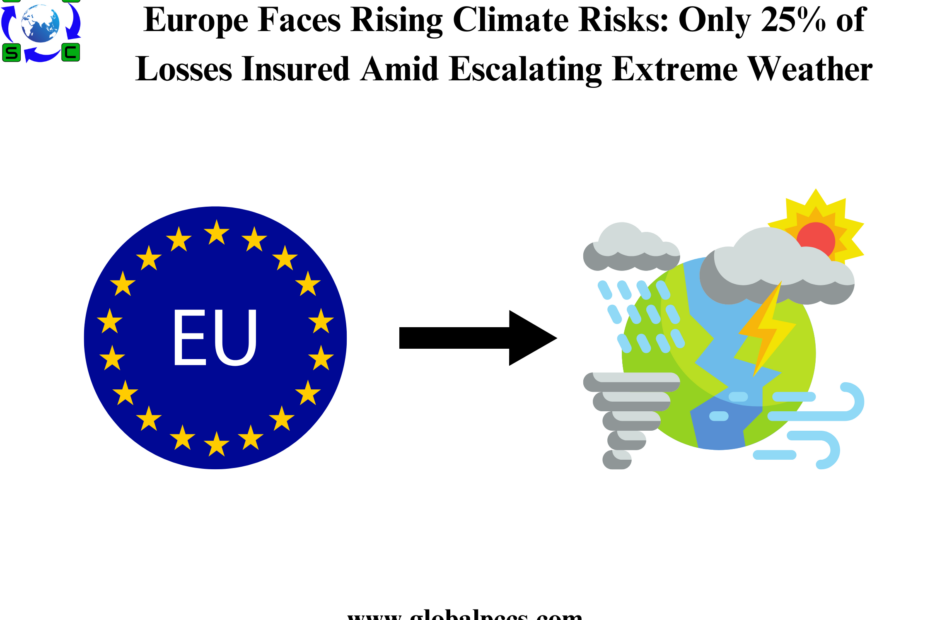
- Europe faces escalating climate risks, with extreme weather events tripling over four decades.
- Only 25% of climate-related losses in Europe are insured, widening the protection gap.
- Public-private partnerships and innovative insurance models are key to enhancing resilience.
Europe’s climate is changing fast, bringing extreme weather that poses significant risks to the region’s economy, environment, and health. With the continent warming at twice the global average since 1980, events like flash floods, torrential rains, heatwaves, and wildfires are becoming more frequent and severe.
Economic Implications
These climate events have a large financial impact. Extreme weather caused Europe to suffer economic damages of €270 billion in 2023 alone. In spite of this, insurance only covers roughly 25% of these losses, creating a sizable protection gap that jeopardises economic stability and puts more strain on government budgets.
Insurance as a Solution
An essential instrument for reducing the financial damage caused by climatic disasters is insurance. Insurance can accelerate economic recovery and lessen the burden on public resources by offering financial protection and promoting risk-reduction strategies. A recent report by EIOPA emphasises how crucial insurance is for mitigating the harmful effects of climate-related disasters. But the protection gap can get much wider due to the decreasing availability and growing expense of insurance, increasing systemic and economic risks.
Public-Private Partnerships
EIOPA encourages investigating new public-private partnerships at the national and EU levels in order to address this challenge. These partnerships may encourage risk mitigation and adaptation, lowering the cost and increasing the accessibility of insurance. “To enhance resilience and close the protection gap, greater cooperation between the insurance industry, regulators, supervisors, and governments is essential,” as noted by EIOPA.
Improving Risk Assessment
EIOPA has made a name for itself as a pioneer in disaster modelling and data exchange, offering useful instruments to enhance the evaluation of climatic hazards. In order to increase data access for efficient risk assessment, the Climate Resilience Dialogue proposes building an EU-wide public data hub for natural disasters and highlights the necessity of ongoing efforts to measure insurance protection gaps.
Enhancing Consumer Awareness
Increasing consumer awareness of climate-related dangers and encouraging insurance uptake are also essential. EIOPA has been creating plans to promote higher insurance uptake, like premium breaks for risk-reduction measures. One important tactic that helps insurers and customers alike is “impact underwriting,” in which they offer incentives to customers to lower their risk exposure.
Strong public-private collaborations and creative insurance structures are essential as Europe struggles with growing climate concerns. Through the enhancement of risk awareness, data sharing, and collaboration, Europe can better prepare its inhabitants for future climate-related calamities and strengthen its resilience.








 Authorised IMDS & CDX Training & Consulting partner for
Authorised IMDS & CDX Training & Consulting partner for





